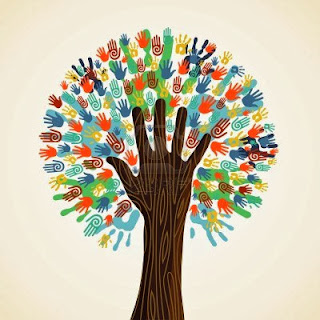What did I leave out?
Preparing for Diversity
Watch this short video about Diverse Learners and Classroom Organization:
How can teachers effectively engage with students from diverse backgrounds?
This is one topic that cannot be avoided in teaching. We are all aware that we will eventually have a classroom full of diverse students but how do we really prepare for this? What can we do to make it a valuable learning experience for everyone? Most researchers put a large emphasis on communication. However, there is importance in preparation, connecting with students and building relationships with families. The Harvard University Research Project has prepared this article that tells us "How can we prepare teachers to work with culturally diverse students and their families? What skills should educators develop to do this successfully?". According to the Harvard Graduate School of Education, students will come into the classroom with some knowledge. This knowledge is shaped by their families, their communities and their cultural backgrounds. The most vital skill a teacher can develop is the ability to build on this knowledge that their students already acquire. Teachers must be understanding to the real lives of the families and children they will be teaching. Set up plausible situations where the families can voice their opinions about the curriculum so their children may thrive in the classroom.
This article discusses a type of skill called teacher diversity capital. Teacher diversity capital is intended to name the type of teaching enhancement that drives teachers to seek new opportunities and ideas. These new opportunities and ideas help build positive relationships with students and families from culturally diverse backgrounds. Diversity capital can in turn afford teachers the knowledge, skills, and dispositions needed for a sustainable commitment with culturally diverse students and families. Teachers need support, motivation, and experiences related to cultures other than their own in order to engage in effective cross-cultural teaching. There are three basic ways a teacher should communicate with parents and guardians:
1. Call each child’s family with positive information.
2. Email each student’s family during the school year with positive information.
3. Through email attachment, post office mail, or student delivery, send a positive message via audio or audio/visual medium regarding each student.
The Multicultural Education Program at the University of California at Berkeley provides this helpful list of links about teaching in a diverse classroom environment. They cover topics such as instructor self awareness, dynamics in a diverse classroom, engaging with diverse topics, and flipping the classroom.
This next resource comes from EdChange.org. This is a wonderful list of activities and icebreakers that focuses on diversity in the classroom. I personally like the idea of "Who I am" poetry. This is a great way for everyone to feel comfortable about being themselves and sharing their identities in the classroom.
For more information on diversity in the classroom, visit the links from above or visit
Edutopia: Preparing for Diversity for more ideas.



No comments:
Post a Comment